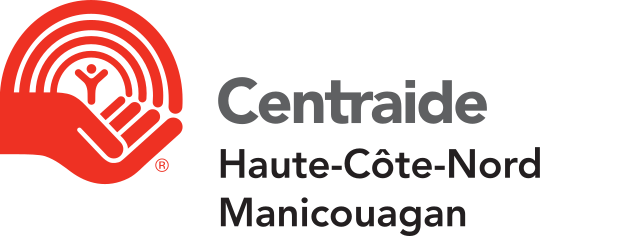[ Browse by Service Category : Disabilities and Health Conditions : Sub-Topics of Health Conditions (109) ]
Anemia
A condition in which there is a beyond normal reduction in the number of circulating red blood cells, the amount of hemoglobin in the red blood cells, or the volume of packed red blood cells in the blood. Anemia may be caused by excessive blood loss, excessive blood cell destruction or decreased blood cell formation, and is characterized by weakness, vertigo, headaches, a sore tongue, drowsiness, pallor and general malaise.
Asthma
A disorder of the bronchial system that is characterized by laboured breathing accompanied by wheezing that is caused by a spasm of the bronchial tubes or by swelling of their mucous membrane. Recurrence and severity of attacks is influenced by secondary factors, mental or physical fatigue, exposure to fumes, endocrine changes at various periods in life and emotional situations.
Bowel Incontinence
An inability to retain feces that may be due to loss of sphincter control or cerebral or spinal lesions, or which may have causes not associated with an illness or organic defect. It is also associated with constipation, impaction and retention with subsequent overflow.
Burns
Tissue injuries that are the result of excessive exposure to thermal, chemical, electrical or radioactive agents. The effects may be local resulting in cell injury or death, or both local and systemic involving primary shock (which occurs immediately after the injury and rarely is fatal) or secondary shock (which develops insidiously following severe burns and often is fatal).
Epilepsy
A recurrent paroxysmal disorder of cerebral function that is characterized by sudden, brief interruptions in or complete loss of consciousness, motor activity and/or sensory phenomena. The seizures are caused by disruptions in the electrical and physiochemical activity of the brain.
Fetal Alcohol Spectrum Disorders
A continuum of permanent birth defects caused by maternal consumption of alcohol during pregnancy, the effects of which can include physical problems and problems with behaviour and learning. A person with FASD might have abnormal facial features, small head size, shorter than average height, low body weight, poor coordination, hyperactivity, difficulty paying attention, poor memory, difficulty in school (especially with math), learning disabilities, speech and language delays, intellectual disability or low IQ, poor reasoning and judgment skills, sleep and sucking problems as a baby, vision and hearing problems and/or problems with the heart, kidneys or bones. Different terms are used to describe FASDs depending on the type of symptoms. Included are Fetal Alcohol Syndrome (FAS), which represents the severe end of the FASD spectrum and is characterized by abnormal facial features, growth problems and central nervous system (CNS) problems; Alcohol Related Neurodevelopmental Disorder (ARND) which is characterized by intellectual disabilities and problems with behaviour and learning; and Alcohol Related Birth Defects (ARBD) which is characterized by problems with the heart, kidneys or bones and/or with hearing. Alcohol Related Birth Defects (ARBD) was previously known as Fetal Alcohol Effects (FAE).
Guillain-Barre Syndrome
A rare form of damage to the peripheral nerves that causes weakness of the limbs that may lead to paralysis. The nerves become inflamed, particularly where their roots leave the spine, impairing both movement and sensation.
Apnea
A temporary cessation of breathing which may result from reduction in stimuli to the respiratory centre, as in overbreathing in which the carbon dioxide content of the blood is reduced; from failure of the respiratory centre to discharge impulses, as when the breath is held voluntarily; or during Cheyne-Stokes respiration.
Ataxia
A condition that occurs when parts of the nervous system that control movement are damaged. People with ataxia experience a failure of muscle control in their arms and legs, resulting in a lack of balance and coordination or a disturbance of gait. While the term ataxia is primarily used to describe this set of symptoms, it is sometimes also used to refer to a family of disorders. It is not, however, a specific diagnosis. Most disorders that result in ataxia cause cells in the part of the brain called the cerebellum to degenerate, or atrophy. Sometimes the spine is also affected. Many ataxias are hereditary and are classified by chromosomal location and a pattern of inheritance. Among the more common inherited ataxias are Friedreich's ataxia and Machado-Joseph disease. Sporadic ataxias can also occur in families with no prior history. Ataxia can also be acquired. Conditions that can cause acquired ataxia include stroke, multiple sclerosis, tumours, alcoholism, peripheral neuropathy, metabolic disorders and vitamin deficiencies.
Caisson Disease
A condition that develops in divers who have been subjected to rapid reduction of air pressure after coming to the surface following exposure to compressed air. The cause is nitrogen bubbles in the tissue spaces.
Children Prenatally Exposed to Drugs
Infants whose mothers abused cocaine or other drugs during pregnancy and, as a result, are at risk for developmental, behavioural, psychosocial and learning problems.
Crohn's Disease
A regional inflammation of the ileum or the intestines.
Diabetes
A disorder in which the pancreas produces too little insulin with the result that the body is unable to adequately metabolize sugar. Principal symptoms are elevated blood sugar, sugar in the urine, excessive urine production and increased food intake. Complications of diabetes if left untreated include low resistance to infections leading to a susceptibility to gangrene, cardiovascular and kidney disorders, disturbances in the electrolyte balance and eye disorders, some of which may lead to blindness.
Facial Disorders/Disfigurements
Any of a variety of diseases or conditions that affect the skull, facial structure and features.
Hepatitis
An inflammation of the liver caused by a variety of agents including viral infection (hepatitis A virus, hepatitis B virus, hepatitis C virus and delta agents), bacterial invasion and physical and chemical agents. Symptoms are fever, nausea, vomiting, fatigue, malaise, muscle and joint pain, headache, photophobia, cough followed by jaundice and an enlarged liver. Hepatitis A and delta agent hepatitis are spread primarily from person to person via the fecal-oral route, but may occur by contact with water or food contaminated by the virus. Hepatitis B and C are spread by blood and serum-derived fluids and by direct contact with body fluids.
Liver Disease
Any of a variety of disorders of the liver, the largest organ in the body which has a major role in a wide variety of vital metabolic functions.
Acoustic Neuroma
A benign tumour of the eighth cranial nerve, the symptoms for which include hearing loss, balance disturbances, pain, headache and tinnitus.
AIDS/HIV
Individuals who are at risk or have tested positive for infection with the Human Immunodeficiency Virus (HIV), or have developed AIDS which is caused by the HIV virus and impairs the function of the body's immune system leaving affected individuals vulnerable to illnesses that would not otherwise occur.
Amyotrophic Lateral Sclerosis
A syndrome, also known as Lou Gehrig's disease, that is marked by muscular weakness and atrophy with spasticity and increased action of the reflexes due to degeneration of the motor neurons of the spinal cord, medulla and cortex.
Brain Disorders
Any of a variety of conditions that are characterized by significant impairment of brain tissue and resultant loss of brain function including degenerative illnesses (e.g., Alzheimer's disease, multiple sclerosis, Parkinson's disease, stroke and other cerebrovascular accidents), genetic variations or mutations that affect the development and functioning of the brain either in utero or following birth, traumatic brain injury, post infection damage, brain tumours, and permanent damage that occurs as a result of seizures, substance toxicity or other disorders as well as conditions affecting the brain that are present prior to birth.
Cancer
Any of a broad group of malignant neoplasms which are either carcinomas which have their origin in epithelial tissues or sarcomas which develop from connective tissues and those structures which had their origin in mesodermal tissues (the muscular, skeletal, circulatory, lymphatic and urogenital systems and the linings of body cavities). Cancer is invasive and tends to metastasize to new sites spreading directly into surrounding tissues or through the lymphatic or circulatory systems.
Common Ailments
Any of a variety of illnesses that are mild in nature and are generally short-lived.
Congenital Conditions/Anomalies
Any of a wide variety of anomalies that are present at birth as opposed to acquired at some point later in life.
Food Poisoning
An imprecise term which indicates an illness that is the result of the ingestion of foods which contain poisonous substances. True food poisoning includes mushroom poisoning, shellfish poisoning, poisoning which results from foods that have been contaminated with poisonous insecticides or toxic substances such as lead or mercury, milk sickness (due to milk from cows that have fed on certain poisonous plants) and poisoning which results from eating foods that have undergone putrefaction, decomposition or poisoning from bacteria.
Heart Disease
Any of a number of pathological conditions that affect the heart and the blood vessels of the heart.
Hydrocephalus
A condition in which there is an increased accumulation of cerebrospinal fluid within the ventricles of the brain due to an interruption in the flow of the fluid which may have been caused by developmental anomalies, infection, injury or brain tumours. The condition results in enlargement of the skull and may cause damage to the brain.
Influenza
An acute, contagious respiratory infection that is characterized by sudden onset, high fever, chills, headache, muscle soreness, and sometimes prostration. Nasal discharge, cough and sore throat are also common; and stomach symptoms such as nausea, vomiting and diarrhea may also occur, but are more often seen in children than adults. Most people recover from the flu in a few days to less than two weeks. People age 65 years and older, people of any age with chronic medical conditions (such as asthma, diabetes, or heart disease), pregnant women, and young children are more likely to get complications from influenza.
Alzheimer's Disease
An age-related, non-reversible brain disorder that develops over a period of years. Initially, people experience memory loss and confusion, which may be mistaken for the kinds of memory changes that are sometimes associated with normal aging. The symptoms gradually lead to behaviour and personality changes, a decline in cognitive abilities such as decision-making and language skills and problems recognizing family and friends; and ultimately to a severe loss of mental function. Alzheimer's disease is one of a group of disorders called dementias that are characterized by cognitive and behavioural problems. It is the most common cause of dementia among people age 65 and older.
Arthritis
An inflammatory condition affecting the joints which is usually accompanied by pain and, frequently, by changes in bone and muscle positioning.
Bladder Incontinence
A condition in which people are unable or unwilling to control their bladder function and urinate involuntarily during the night or the day after an age where continence is expected. The condition may have pathological or functional causes or may be a voluntary act that is representative of a behaviour pattern.
Chronic Obstructive Pulmonary Disease
A group of diseases that includes asthma, bronchitis, emphysema and bronchiectasis which involve obstruction of an individual's airflow. The conditions may be chronic and irreversible or reversible but recurrent.
Cystic Fibrosis
An inherited disease that affects the pancreas, respiratory system and sweat glands, which usually begins in infancy and is characterized by chronic respiratory infection, pancreatic insufficiency and heat intolerance. Prognosis is poor as there is no cure, but antibiotics have prolonged the life of many patients.
Dwarfism
The condition of being abnormally small in stature which may be hereditary or a result of endocrine dysfunction, deficiency diseases, renal insufficiency or diseases of the skeleton.
Fibromyalgia
A condition that is characterized by chronic pain in tendons, ligaments and muscles surrounding joints. Other symptoms include muscle spasms, fatigue, stiffness, abnormal sleep patterns with unrefreshing sleep, headaches and, occasionally, depression. There is significant overlap with chronic fatigue syndrome (CFIDS) in which fibromyalgia may arise as a secondary disease process. The cause of the condition is unknown.
Genetic Disorders
Any of a number of illnesses or conditions that are the direct result of the mutation of one or more genes. Some genetic disorders are hereditary, transmitted from parent to offspring, but others occur spontaneously and are not familial in origin.
Kidney Disease
Any of a number of pathological conditions of the kidneys, the organs that are responsible for urination and for helping to regulate the water, electrolyte and acid-base content of the blood.
Multiple Sclerosis
A chronic, slowly progressive disease of the central nervous system in which the myelin sheath which covers the nerves hardens, resulting in difficulties with muscle control, involuntary movements of the eyeballs, speech problems and tremor. Multiple sclerosis is marked by a history of remissions and exacerbations.
Pain
A condition in which the individual suffers from physical discomfort of various levels of intensity that arises from tissue damage.
Stroke
A sudden loss of consciousness followed by paralysis which is caused by hemorrhage into the brain, formulation of a blood clot or mass of undissolved matter in the blood that occludes an artery, or rupture of an extracerebral artery causing hemorrhaging in the membranes which enclose the brain and spinal cord.
Tuberculosis
An infectious disease that is caused by the tubercle bacillus and characterized by inflammatory infiltrations, formation of lesions, necrosis, abscesses, formation of scar tissue and calcification. The disease most commonly affects the respiratory system but may also involve the gastrointestinal and genitourinary tracts, bones, joints, nervous system, lymph nodes and skin.
Muscular Dystrophy
A group of genetic diseases that are characterized by progressive weakness and degeneration of the skeletal muscles that control movement. There are many forms of muscular dystrophy, some noticeable at birth (congenital muscular dystrophy), others in adolescence (Becker MD), but the three most common types are Duchenne, facioscapulohumeral, and myotonic which differ in terms of pattern of inheritance, age of onset, rate of progression, and distribution of weakness. Duchenne MD primarily affects boys and is the result of mutations in the gene that regulates dystrophin, a protein involved in maintaining the integrity of muscle fibre. Onset is between three to five years and progresses rapidly. Most boys become unable to walk at age 12, and by age 20 have to use a respirator to breathe. Facioscapulohumeral MD appears in adolescence and causes progressive weakness in facial muscles and certain muscles in the arms and legs. It progresses slowly and can vary in symptoms from mild to disabling. Myotonic MD varies in the age of onset and is characterized by myotonia (prolonged muscle spasm) in the fingers and facial muscles; a floppy-footed, high-stepping gait; cataracts; cardiac abnormalities; and endocrine disturbances. Individuals with myotonic MD have long faces and drooping eyelids; men have frontal baldness.
Orphan Diseases
Any of a variety of pathological conditions whose occurrence is so rare that research regarding treatment has not been a priority.
Prader-Willi Syndrome
A rare, incurable genetic disorder that is characterized by short stature; lack of muscle tone, size and strength; poor motor skills; underdeveloped or small genitals; an insatiable appetite that can lead to obesity if untreated; mild intellectual disabilities; and learning disabilities. Babies with PWS are usually floppy with poor muscle tone, and have trouble suckling. Boys may have undescended testicles. Other signs appear later.
Scleroderma
A chronic disease of unknown etiology which causes sclerosis or hardening of the skin and certain organs including the gastrointestinal tract, lungs, heart and kidneys.
Sensory Processing Disorder
A neurological disorder (also known as "sensory integration dysfunction") that is characterized by the brain's inability to organize information about one's own body and the world that is obtained through the five senses (sight, hearing, taste, smell and touch). Difficulties may also affect the proprioceptive system which provides a sense of the position of the body in space and the vestibular system which provides a sense of how the body is moving even when the eyes are closed. Depending on the form the disorder takes, symptoms may include oversensitivity to touch, movement, sights or sounds; lack of reaction to external stimuli including an inadequate response to pain or temperature extremes; unusually high or low activity level; lack of coordination/motor clumsiness; and behavioral problems. SPD is often associated with other diagnoses such as learning disabilities, attention deficit disorder, autism spectrum disorders, language impairments, anxiety disorders, depression and behavioral disorders. Its status as a diagnosis in its own right has yet to be universally accepted.
Sexually Transmitted Disease
Any of a variety of diseases that are acquired as a result of sexual activity with an individual who is infected.
Tinnitus
A condition in which there the perception of sound in one or both ears or in the head when no external sound is present. It is often referred to as "ringing in the ears", although some people hear hissing, roaring, whistling, chirping, or clicking. Tinnitus can be intermittent or constant, with single or multiple tones, and its perceived volume can range from subtle to shattering. Causes may include noise-induced hearing loss, wax build-up in the ear canal, ear or sinus infections, jaw misalignment, cardiovascular disease, head or neck trauma, certain types of tumours, a side effect of some medications or as a symptom of disorders such as hypothyroidism, hyperthyroidism, lyme disease and fibromyalgia.
Ulcerative Colitis
A type of inflammatory bowel disease that affects the large intestine (colon) and rectum. The disease usually begins in the rectal area and may eventually extend through the entire large intestine. Repeated swelling (inflammation) leads to thickening of the wall of the intestine and rectum with scar tissue. Death of colon tissue or severe infection may occur with severe disease. Symptoms include abdominal pain and cramping that generally disappear following a bowel movement, gurgling or other abdominal sounds, fever, rectal pain and weight loss.
Hemophilia
A hereditary blood disease that affects males and is characterized by greatly prolonged coagulation time. The blood fails to clot and abnormal bleeding occurs. Hemophilia is a sex-linked hereditary trait which is transmitted by normal females who carry the recessive gene.
Huntington's Disease
An inherited disease of the central nervous system which usually has its onset in people age 25 to 55. The individual has progressive dementia with bizarre involuntary muscular twitching of the limbs or facial muscles. The posture is abnormal. The disease slowly progresses and death is usually due to an intercurrent infection.
Infertility
A condition that is characterized by the inability or diminished ability of one or both partners to produce children.
Lupus Erythematosus
Lupus, in its cutaneous form, is a chronic disease of unknown etiology which causes skin lesions on the face, neck and upper extremities. In its systemic form, lupus is a chronic inflammatory disease of the connective tissue, of unknown etiology which affects the skin, joints, kidneys, nervous system and mucous membranes. A characteristic butterfly rash may be present across the cheeks and the bridge of the nose.
Macular Degeneration
A progressive disorder that affects the central part of the retina causing gradual loss of vision. Macular degeneration is a painless condition that is fairly common in people who are elderly. It generally affects both eyes, either simultaneously or one after the other.
Neurofibromatosis
A genetic disorder that affects the cell growth of neural tissue and is characterized by tumours of various sizes on the peripheral nerves.
Osteoporosis
A condition, usually seen in people who are elderly, which is marked by increased porosity or weakness of the bones. The condition becomes apparent when the osteoporosis has progressed to the stage at which a bone fractures in a situation that would not normally damage the skeleton.
People with Chronic Illnesses
Individuals who have serious medical conditions that have persisted over a long period of time or are subject to frequent recurrences, are treatable but rarely cured completely and require persistent self-management behaviours. Chronic illnesses may be life-long in duration and/or progressive in nature; and many are marked by sudden flare-ups that can be caused by stress or other factors. Medicine and other treatments can often help people with chronic illness lead a normal life, although many require long-term care.
Spina Bifida
A congenital defect in the walls of the spinal canal caused by lack of union between the laminae of the vertebrae. As a result of this deficiency, the membranes of the cord are pushed through the opening forming the spina bifida tumour.
Swallowing Disorders
Any of a variety of pathological or congenital conditions that make it difficult for the individual to swallow food normally. Symptoms include a lump in the throat, hoarseness, a sore throat, pain during swallowing, avoidance of specific foods or liquids and repeated attacks of pneumonia due to unconscious aspiration of food into the lungs.
Lymphoma
Any of a variety of cancers that develop in the lymph system, a network of thin vessels and nodes throughout the body which filter the blood and help fight disease and infection. The site of the malignant transformation is usually a lymph node but may be the lymphatic tissue of the marrow, gastrointestinal tract, spleen, skin or other sites. The disease results from the uncontrolled growth and accumulation of malignant lymphocytes. Enlargement of affected lymph nodes is usually the principal manifestation.
Parkinson's Disease
One of a group of conditions called motor system disorders which result from loss of dopamine-producing brain cells. Symptoms of PD include tremor (trembling in hands, arms, legs, jaw, and face), rigidity (stiffness of the limbs and trunk); bradykinesia (slowness of movement) and postural instability (impaired balance and coordination). As these symptoms become more pronounced, patients may have difficulty walking, talking, or completing other simple tasks. The disease usually affects people over the age of 50, can be difficult to diagnose accurately and may require brain scans or laboratory tests to rule out other conditions.
Poliomyelitis
An inflammation of the gray matter of the spinal cord which often produces paralysis of the muscles that are controlled by the spinal nerves that were damaged by the illness.
Primary Immune Deficiency Disorders
A group of disorders that are caused by genetic defects in the cells and tissues of the immune system rather than factors external to the immune system such as viruses and chemotherapy.
Sjogren's Syndrome
A chronic, slowly progressive autoimmune disorder that is characterized by dryness of the eyes and mouth, and recurrent salivary gland enlargement. The disease may be seen alone or in association with other autoimmune diseases such as rheumatoid arthritis, lupus erythematosis or scleroderma.
Spinal Cord Injuries
Trauma or damage to the column of nervous tissue that extends from the medulla to the second lumbar vertebra in the spinal canal. All nerves to the trunk and limbs are issued from the spinal cord, and it is the centre of reflex action containing the conducting paths to and from the brain.
The above terms and definitions are part of the Taxonomy of Human Services, used here by permission of INFO LINE of Los Angeles.















